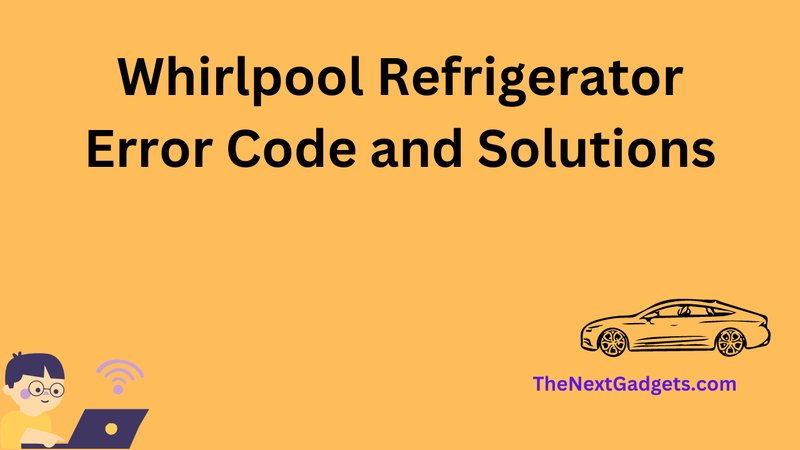
The F1 error code can be a bit mysterious, but you don’t need to be a refrigerator technician to understand it. Essentially, this code is your Whirlpool refrigerator’s way of letting you know there’s something up with the control board, which is sort of like the brain of your fridge. It helps manage all the different components and functions, ensuring everything runs smoothly. When something disrupts this delicate balance, the appliance can’t perform at its best, and that’s when you might see the F1 error.
Understanding the Control Board
So, what exactly is this control board? Imagine it as the command center of your fridge, much like the motherboard in a computer. It coordinates all the different features and systems—like cooling, defrosting, and lighting—ensuring they work together seamlessly. When the control board malfunctions, it can send out the F1 error code as a cry for help.
This problem might arise from a power surge, which can disrupt the system’s normal functioning, just like a sudden storm might knock out power in your home. Another possibility could be a manufacturing defect that’s only now making its presence known, much like a small crack that gradually spreads in a windshield. Sometimes, the issue is simply due to wear and tear over time, as components age and start to falter.
If you find yourself facing the F1 error, your first step should be to try resetting the control board. This is akin to rebooting your computer when it starts acting up. Unplug your refrigerator, wait a few minutes, and then plug it back in. If the error persists, it’s time to delve a little deeper into potential causes.
Potential Causes of Error Code F1
One potential culprit behind the F1 error is a problem with the temperature sensor. This sensor acts like a thermostat, keeping tabs on the internal temperature and sending feedback to the control board. If it’s faulty, it’s like trying to read a thermometer that’s stuck—your fridge can’t get accurate readings, and the control board might panic, resulting in the F1 error.
Another cause could be issues with the wiring or connections that link the control board to other components. Think of this as similar to a loose wire in your headphones causing static; if there’s a poor connection, the information can’t flow correctly, leading to an error message. Inspecting these connections can help identify any loose or damaged wires that might be causing the disruption.
Finally, a more technical issue could involve the control board itself. It might have a defect or damage from electrical surges or wear. Just like how a cracked phone screen eventually needs replacing, a faulty control board may necessitate professional repair or replacement to restore your fridge’s function.
What to Do Next
Once you’ve identified potential causes, what’s your next move? If the problem seems straightforward, such as a loose wire, you might feel comfortable tackling it yourself. Ensure the refrigerator is unplugged, and carefully check the wiring connections. If tinkering with electronics isn’t your cup of tea, or if the problem persists beyond simple fixes, seeking professional assistance is the best course.
Regular maintenance can prevent many issues that lead to the F1 code in the first place. Think of it like regular oil changes for your car—routine checks can catch problems early, saving you time and hassle down the road. Be sure to keep the coils clean, avoid overloading the fridge, and watch for signs of wear in its components. Prevention is your best friend when it comes to avoiding frustrating error codes.
In conclusion, while the F1 error code might initially seem intimidating, understanding its causes and taking steps to address them can make the path to resolution much clearer. Whether through DIY fixes or professional help, you can get your Whirlpool refrigerator back to running smoothly and keeping your food fresh.
